2014-07-08 By Robbin Laird
During my recent visit to the 2nd I have had the opportunity to visit the 2nd Marine Aircraft Wing for a number of years.
The Wing has been an important force for innovation in the period in which I have been visiting. KC-130Js, and Ospreys are certainly two parts of that innovation, but the Special Purpose MAGTF generated from here as well.
But innovation takes time.
My visits over the years to your Osprey squadron are certainly a case in point.
During one of my first visits, an Osprey pilot pointed out that one challenge in Iraq was convincing Marines to get off of the plane for “we can’t be there yet.”
Later another member of what the Marines call the “Osprey nation” noted that a sign of progress was “we are no longer a bar act.” Now the Marines are only tiltrotor enabled assault force in the world and you are moving ahead with other innovations enabled by this capability.
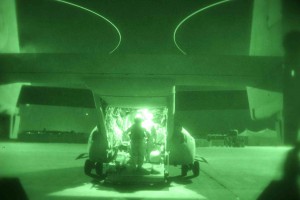
Question: Looking back how do you view the process of change?
MajGen Hedelund: If I reflect back on my own experience with the Osprey and can certainly underscore that innovation takes time. When I was getting ready to get my wings in Pensacola, a senior Marine came and shook my hand and said that I was going to be a lucky Marine. Why I asked? He said “you are going to the East Coast CH-46s for one deployment and then to the MV-22 for the rest of your career.”
That was 1985. My next checkpoint along the way was a stop at the Boeing plant in 1988 to see the first Osprey on the planet.
This was the aircraft they rolled out for General Gray and it was pained in in General Gray’s camouflage. And there I was, Captain Hedelund, looking into to the cockpit with excitement, and at a cockpit that would never be used in an operational Osprey.
In 2001, I was slated to become a VMM commander but became an HMM commander because the V22 program was in an operational pause. So I became the CO of HMM-162, but then next up was Karsten Heckl, now Assistant Deputy Commandant for Aviation, who then became the first VMM-162 Commander.
When I became the CO of MAWTS-1 in 2006, I had my first crack at flying the airplane.
And the experience was an eye opener with regard to what a key platform it could be for the USMC and change the way we did amphibious assault.
Iraqi operations was really the first time that MAWTS-1 got their hands on a living, breathing V-22 and our task at the time was to integrate the plane into Iraqi operations and also for the weapons and tactics instructors course.
Question: When I first came to New River several years ago there were very few Ospreys on the tarmac.
When I came down earlier this year with Murielle Delaporte she was surprised the number of Ospreys on the tarmac, and as frequent visitor and interviewer of the French Air Force, she pointed out that numbers matter.
MG Hedelund: We are only talking now a few years, but the changes in that time have been truly stunning.
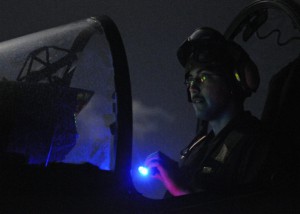
And we are taking that operational experience and marrying it with a wide range of innovative thinking as well, with regard to anticipating the F-35, to the use of UAVs, to the integration of electronic warfare, and with regards to digital integration of the assault force.
For us, innovation is blended with a combat culture that innovates for a purpose – to succeed in difficult circumstances.
With the Osprey we are not thinking rotorcraft terms.
We are thinking in big chunks of operational space and figuring out how to operate more effectively within the expanded battlespace.
When I say speed is life, I think that you can do things with a force that is relatively light by being ahead of them as far as situational awareness and reach so you can get in, get something accomplished and get out before the adversary knows that you’re in their backyard.
https://sldinfo.com/another-step-in-the-maturation-of-the-osprey-long-range-and-high-altitude-ops/
http://breakingdefense.com/2013/07/maturing-of-the-osprey-first-v-22-pilots-awarded-dfcs/
Question: I am able to spend time with your KC-130J squadron and the warriors operating Harvest Hawk. They are really expanding the notion of sustainment and really are crucial to what one might call sustainable reach.
MG Hedelund: The KC-130J and Osprey pairing is changing the way the USMC operates, and another major change on the way is with regard to electronic warfare.
We are working with UAVs, Prowlers and with the F-35 when it gets here, to reshape how we think about electronic warfare.
A capability like Harvest Hawk has revolutionized how we look at NTISR and delivery of precision fires – game changer simply said.
Tactical electronic attack is an art form that enables thinking through how to operate a force in a contested operational area.
The Marines have pioneered electronic warfare, and at 2nd MAW we are working the problem hard.
Question: You have raised the point about evolving and future oriented capabilities. How is 2nd MAW getting ready for the future, including the introduction of F-35s into the MAGTF?
MG Hedelund: We want to accelerate the innovation, which the F-35 can bring to the USMC.
We are digital immigrants; the operators of the F-35 are going to be the digital natives.
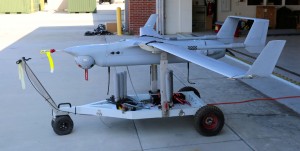
And those natives are going to pioneer how the plane will be used. My job is to facilitate their efforts.
When you visit our UAV squadron, you will see the squadron pushing the envelope on change.
We are flying a modified scan eagle or the RQ-21 Blackjack. We are operating it currently in Afghanistan to find out what it can and cannot do, and where we want to go with this capability.
We have put in new capability while preparing to exit Afghanistan, which highlights our approach to squeezing out innovation from combat experience.
And we are focusing less on the air vehicle than on the innovations with regard to payloads carried by the air vehicle.
The RQ-21 is not a huge evolutionary jump as an air vehicle but it enables us to work with an operational capability which can be used ashore or off of a ship to support our operations. The critical piece here is the wide spectrum of payloads it can carry. And, with the right connectivity it can go the distance to build the situational awareness of the battlespace we need to start ahead of our foes.
We have used the Shadow but it is not mobile and not expeditionary. It is not our future in the unmanned world.
Question: What observation might you make about your approach to the future?
MG Hedelund: We certainly do not want to repeat one key experience from introducing the MV-22 into the USMC. It was poorly described as a “medium lift replacement” for the CH-46.
The F-35 is not a replacement for anything; it is a whole new capability for the MAGTF, and needs to be approached from the outset as such.
And we do not want to be flatfooted when we get the next good idea for combat innovation, but that is always a challenge.
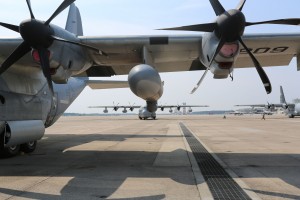
Question: Clearly, the role of VMX-22 with MAWTS-1 provides a good push in that direction.
You were the CO of MAWTS-1, and how do you view their role in getting the USMC ready for the F-35 and the F-35 ready for the USMC?
MG Hedelund: It is central.
The ADT&E Division within MAWTS-1 will be hungry for operational capability of the JSF.
There will be natural magnetism between those in 121 who want to kill the enemy sooner and those at MAWTS-1 who want to standardize and integrate how to do it.
And it’s not happenstance that the CO of 121 right now is a former MAWTS-1 instructor and who worked for me when I was the CO out there.
Lt. Col. Gillette was in the F-18 Division when I was the CO out there.
It’s a very healthy thing that VMX-22, VMFA-121 and MAWTS-1 will be sharing their backyards.
The smart guys and gals in those units will drive innovation like nowhere else in our Corps – or anywhere else.
It is clear that relationship is absolutely vital to getting as much out of that squadron as we can both before they deploy and once they do deploy.
The biography of Major General Hedelund:
A native of Pompano Beach, Florida, MajGen Hedelund received his bachelor’s degree from Florida Atlantic University and was commissioned a Second Lieutenant in April 1983. He was designated an unrestricted Naval Aviator in May 1985.
As a CH46E pilot, MajGen Hedelund has deployed overseas with HMM-264 (1985-1988), HMM-365 (1991-1994) and HMM-162 (2001-2003). He was a Basic and Advanced Helicopter Flight Instructor at Helicopter Training Squadron 18 at NAS Whiting Field from 1989-1991. MajGen Hedelund served as a CH46E Instructor and Assault Support Department Head at Marine Aviation Weapons and Tactics Squadron One (MAWTS-1) in Yuma, AZ (1995-1998).
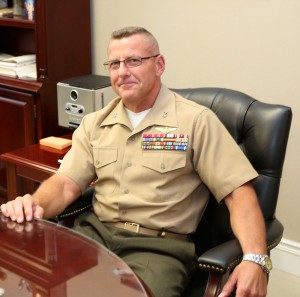
Command assignments include Commanding Officer, Headquarters Squadron, Marine Aircraft Group 29, MCAS New River in 2000. In 2001, he assumed command of HMM-162. The Golden Eagles deployed with Marine Aircraft Group 29 in support of major offensive combat operations during Operation IRAQI FREEDOM from January to May 2003.
MajGen Hedelund also served as the Commanding Officer, MAWTS-1 from July 2006 to June 2008.
From August 2009 to February 2011 MajGen Hedelund was Commanding General, Marine Corps Warfighting Laboratory; serving concurrently as the Vice Chief of Naval Research at the Office of Naval Research (ONR).
MajGen Hedelund is a distinguished graduate of The Basic School and Marine Corps Command and Staff College. He attended the Air War College, Montgomery, AL during the 2004 academic year and has also attended the Joint Forces Staff College, Norfolk, VA.
Staff assignments include selection as a member of the Marine Corps Strategic Studies Group serving the Commanding General, Marine Corps Combat Development Command (1999). MajGen Hedelund has also served at US Joint Forces Command where he was assigned to the Joint Warfighting Center/J7, responsible for Joint Force Training and Exercise support for US Northern Command.
He reported to the Pentagon in July 2008 to serve as Military Assistant and Marine Aide to the Secretary of the Navy and finished his tour there as the Secretary’s Senior Military Assistant.
From February 2011 to May 2013, MajGen Hedelund was assigned duties as Director, Marine and Family Programs Division (MF), M&RA, HQMC in Quantico, VA.
MajGen Hedelund assumed command of 2D Marine Aircraft Wing May 22, 2013.
The following photos were shot during a visit to New River in February 2014.
[slidepress gallery=’ospreys-and-landing-zone-flexibilities’]
Credit Photos: Second Line of Defense

